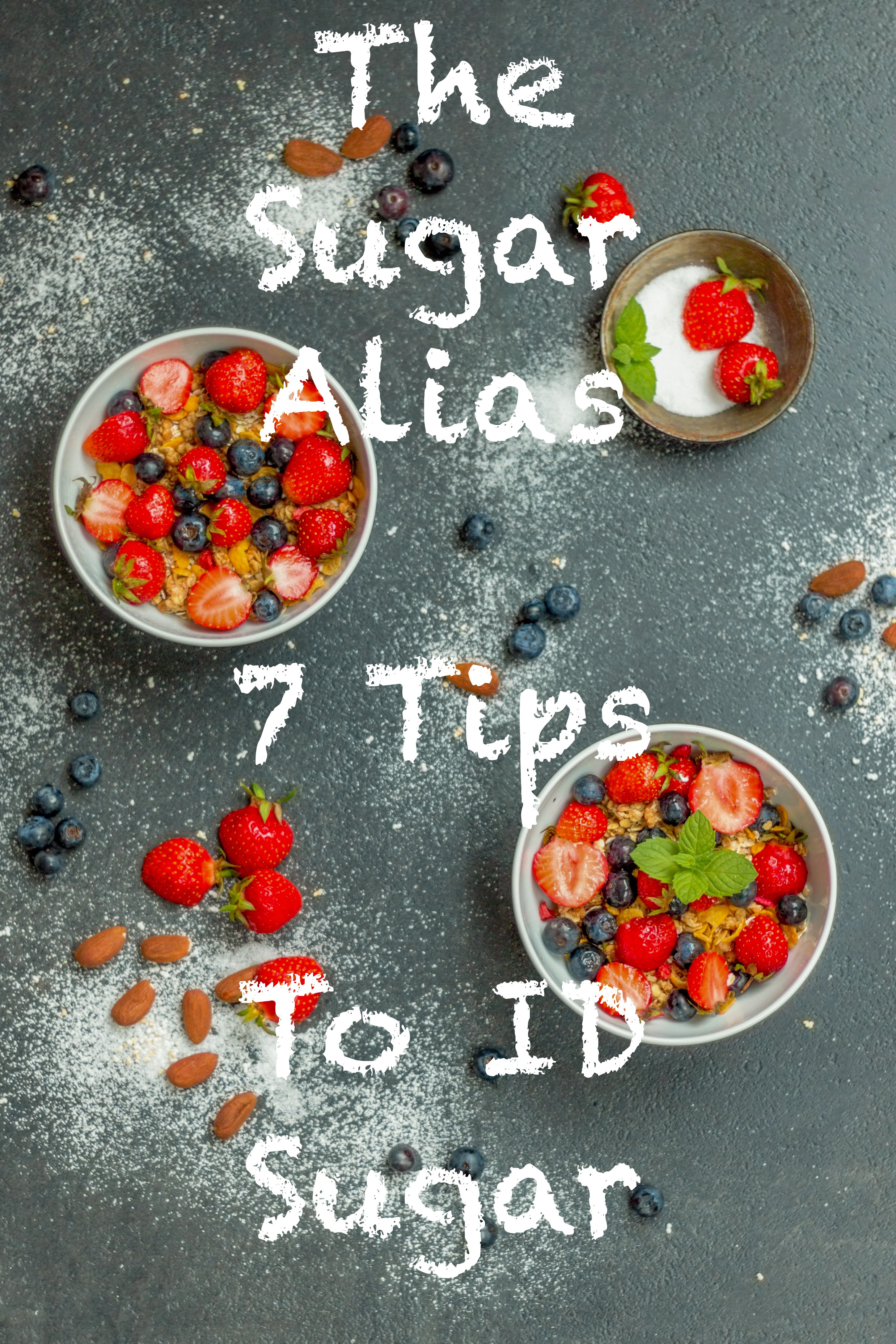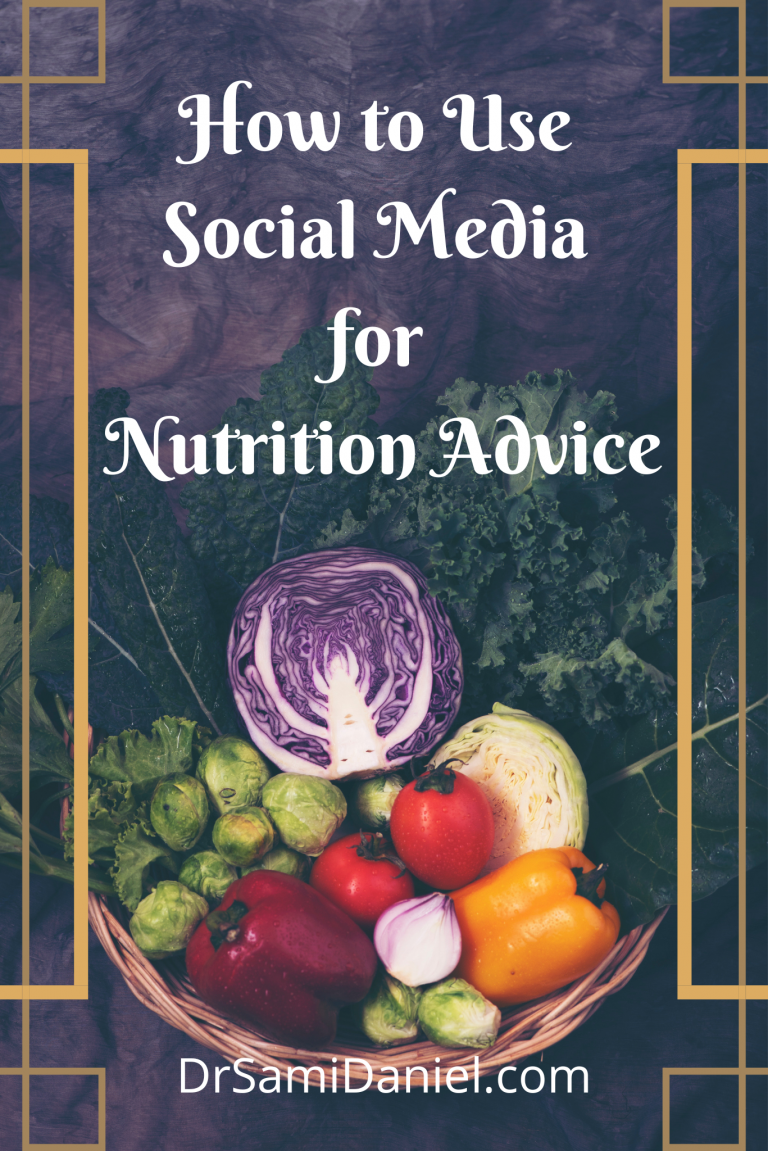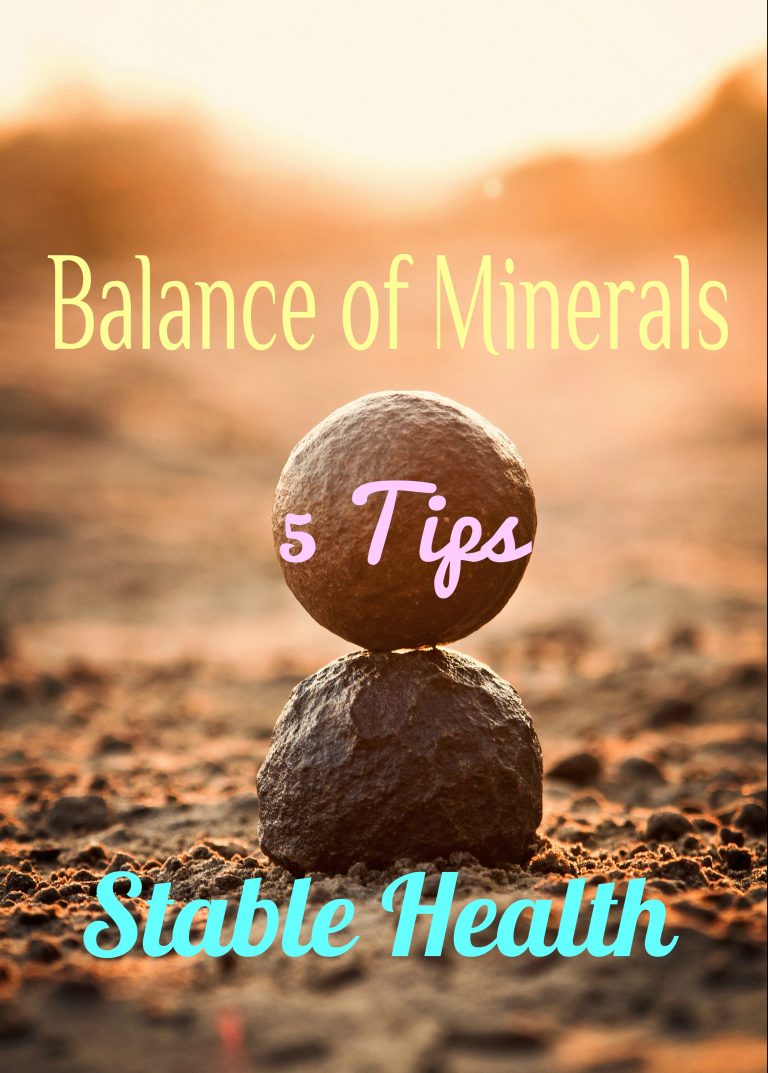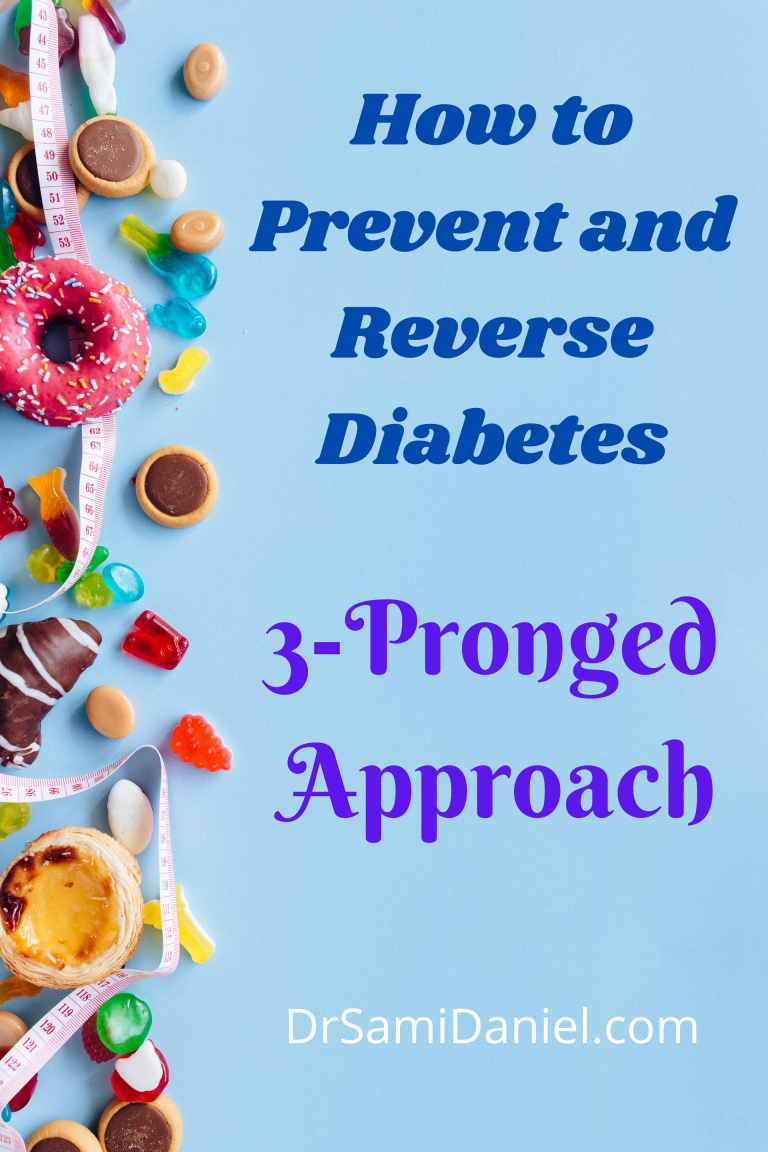The Sugar Alias
What is Sugar
I find that people are generally aware of the deleterious effects of sugar on our bodies. So we try to avoid eating desserts, candies, and sweets as much as possible. But what’s in that extra pump of mocha swirl in our morning latte? Or that spoonful of relish on our hotdog? Or in that dressing we put on our salad?
Sugar hides in all kinds of food products and goes by many names. This thwarts our best efforts to be good to our bodies. So since sugar seems to be so prevalent in our food supply, let us start at the beginning…
What is Sugar?
Sugar is not simply a powdery, crystal white substance that feels like sand. Sugar is created by plants for survival. In other words, sugar is a life-giving substance! Plants combine water, vitamins, minerals, and other nutrients from the Earth in the process of Photosynthesis! I am sorry to bring back haunting memories of high school biology class! But I need to make a point here… Sugar is a natural substance created for life on Earth!
So what’s the deal? Why do we say fruits and vegetables are healthy for us? But when we extract the natural sugars from the plant, we say that this is bad for us? Isn’t this a double-standard?
It all comes down to how your own body processes the sugar. And this depends on what your body needs!
Why the Body Needs Sugar
Our bodies spend an enormous amount of energy to maintain the sugar level in our blood! Why? Because the Brain must always have fuel! Here in the blood, that fuel is known as Glucose.
The normal range of Glucose in the blood stays between 65 – 99 mg/dL. This is a vague number for people other than Doctors. But this number translates to about 4 grams of sugar in your blood at any given time! To make this number more concrete, this equates to a little less than 1 Teaspoon of sugar! If you have a kitchen scale, go measure out 4 grams of sugar and see how many teaspoons you get out of it!
Hard to believe that 1 Teaspoon of sugar keeps you alive and well at any given time! Any less or any more can cause serious clinical problems like confusion, altered mental status, coma, and even death. Brain problems!
Therefore our Pancreas ensures that our blood glucose levels remain optimum! If we have eaten a meal, we will have more than 1 Teaspoon of sugar in our blood. Our Pancreas will sense this extra sugar, and release Insulin to tell the cells of our body to take in more sugar.
Our brain does not need insulin to get glucose and continue using it! But with the help of Insulin, our muscle cells will burn the extra sugar and our fat cells will store any more extra sugar. When these cells have taken enough sugar, the glucose in our blood returns to the normal 1 Teaspoon. Then the Pancreas stops releasing Insulin.
If the sugar gets too low, our Pancreas releases Glucagon! Glucagon tells our fat cells to release fat into the bloodstream. This fat will make its way to the liver where it will be converted back to sugar for the brain and the body.
Insulin and glucagon have many more functions. The previous explanation is just a simple representation of what goes on in the body.
So if we need sugar to survive, why do we heed the advice of health gurus by avoiding extra sugar in our diet?
Glucose Versus Sugar
This is the point our body splits hairs. Because although we need sugar, we also need to maintain our blood glucose levels in that optimum range!
Simply put: Whole plants help us maintain our optimum blood glucose levels. Extracted sugar does NOT! Let me explain by showing how the Digestive System will process each kind of sugar.
Our Digestive System Function
Our Digestive System is wonderfully complicated! It’s SOLE purpose is to process the food we eat!
In order to process our food efficiently, the body has 3 main functions:
- Break down food to its simplest building blocks (These are the “Macros” most people refer to: Carbohydrate, Fat, and Protein).
- Absorb the nutrients as needed (This includes the “Macros” as well as vitamins and minerals).
- Eliminate waste products that are not needed by the body.
Our bodies are experts at these 3 functions and therefore finely tuned to break down, absorb, and eliminate food!
Now let’s walk through this finely tuned machine and see what happens when we eat whole foods like vegetables/ fruits versus eating simple carbohydrates/ sugars. (I chose vegetables and fruits as examples NOT because I am encouraging a vegetarian or vegan diet. I have chosen them because they generally have the most natural sugars as opposed to nuts, seeds, meats, or fat).
Let’s Eat a Vegetable/Fruit
The moment we take the first bite of any food, Digestion begins!
In Our Mouth
Our teeth nosh on these vegetables and fruits to begin breaking down their fibers and cells of the food in order to access the nutrients. But our teeth are not the only thing to begin this process! We have enzymes in our saliva known as Amylase! Amylase is the primary enzyme that our bodies use to break down sugars in our food. However this is ONLY the BEGINNING!
In Our Stomach
After we feel sufficiently comfortable to swallow, the Vegetable/Fruit goes down the Esophagus and enters the Stomach. Most people think that THIS is the place where Digestion happens… And they are ONLY PARTLY correct! Some digestion does occur because more enzymes are released and activated by the acid in the stomach. So the enzymes and the stomach acid help break down the food some more.
The stomach is also known to release something called Intrinsic Factor. This is a protein that the stomach produces and releases into the food being digested in order to help with the absorption of Vitamin B12. If this does not occur (such as in people with autoimmune disease or gastrectomy surgery where a portion of the stomach is removed to make it smaller), then people develop Pernicious Anemia.
Additionally, the stomach acid also works to kill any potentially harmful bacteria that hitched a ride on your food! This does not always work. Bacteria like H. Pylori actually THRIVE in the acid and uses it to sustain itself! Therefore antibiotics must be used to eradicate it. So speak to your Doctor.
When done, the stomach SLOWLY releases the food into your small intestine.
Transition from Stomach to Small Intestine
The transition between the stomach and the small intestine is carefully timed to neutralize the stomach acid leftover in the food! This prevents the small intestine from getting burned by the acid since it is not protected like the stomach.
Furthermore, there is an interplay of hormones here that prepares the Pancreas to release Insulin into the bloodstream. This is done in anticipation of the sugars that are about to be absorbed. In other words, the Pancreas sees the food coming and prepares itself as well as the body as a whole.
Additionally, the Pancreas simultaneously squeezes out a few more enzymes into the small intestine to further digest the food. Now the food is sufficiently broken down and ready for absorption by the small intestine.
If this transition is not controlled such as in Dumping Syndrome, then Small Intestinal Bacterial Overgrowth (SIBO) is likely to occur.
In Our Small Intestine
Our Small Intestine is lined with Villi. These Villi are very fine hair-like structures that significantly increases the surface area of the walls of the intestine. We increase surface area to maximize the amount of nutrients we can absorb from the food we eat!
These Villi make sure to get all these nutrients by having enzymes on the surface. This is the final stage of digestion before absorption. But this is a crucial stage! Because the different sugars we eat are broken down completely.
Lactose (found in milk products) is broken into Galactose and Glucose. Sucrose (aka: Table sugar) is broken into Fructose and Glucose. Fructose (The kind of sugar found in fruit) is absorbed and taken directly to the liver.
The small intestine also absorbs all the other vitamins and minerals, fats, and proteins we ingest.
In Our Large Intestine
Digestion is essentially done at this point! The main focus here is to absorb any leftover water that the body needs. Then the feces is expelled.
Let’s Eat Simple Carbohydrates/Sugars
The above process is largely hijacked because the body does not have to work for sugars!
The carbohydrate is the easiest of all the macronutrients to digest!
Bread, pasta, dessert, sugar, and others qualify as a simple carbohydrate or sugar because they are already broken down to their simplest form.
This means the body needs to do almost nothing to absorb them! In turn, this spikes your blood sugar levels!
Let’s walk through the digestive system to see what happens.
In Our Mouth
Go take a piece of bread and bite it. Then allow it to dissolve in your mouth without swallowing it. You may notice that it starts to taste sweet! This is the work of amylase in your mouth!
The amylase broke down that bite of bread into a sugar VERY easily! Why? A carbohydrate is essentially sugar!
There are several sugar molecules that come together to make up a carbohydrate molecule. The job of amylase is to break down the carbohydrate molecule into all the little sugar molecules that built it.
Once that is done, you experience the sensation of sweetness on your tongue!
In Our Stomach
Assuming we did not inhale our guilty pleasure (Devil’s cake, anyone?), sugars and carbs require very little digestion in our stomachs!
Ever wonder why you are SO stuffed after a meal that a mere thought of taking one more bite makes you nauseous? But then the dessert cart roles around and you suddenly have a “second stomach”?
The space requirements of food in your stomach is only ONE factor that determines your level of fullness! Another factor is how EASY something can be digested!
In the case of simple carbs and sugars, digestion is almost non-existent! Therefore it moves right on through to your Intestines.
Transition from Stomach to Small Intestine
Because little digestion is required, the normal control mechanisms are subverted.
Hormones do not see the necessity to digest anything because nothing needs to be digested! As a result, this food comes flying into your intestines. This causes problems!
Your pancreas does not see it coming! Therefore the pancreas is not prepared to receive this shot of simple carbs and sugars. It also did not prepare the body to receive this load of sugar. Therefore the blood sugar spikes and forces the pancreas to work overtime to bring the blood sugar back to a normal level!
We also get a small form of Dumping Syndrome. While this usually happens after some form of surgery, this syndrome develops when sugar moves from the stomach to the intestines very quickly! As a result, people might feel cramping and diarrhea within a few hours of their meal. For more information, check out the Mayo Clinic website on Dumping Syndrome.
Also, you have just provided a sugar buffet for all the microbes in your gut! They will multiply significantly and create a barrier to absorbing nutrients from your food.
In Our Small Intestine
The amylase found here do not need to do much work since it was easily done in the mouth and stomach! Therefore the small intestine simply needs to absorb everything! I will explain.
Imagine trying to pull a brick through a chicken-wire fence. Assuming the holes are not big enough, this activity is next to impossible! Normally, the body would take the time to break it down and pull it through the fence piece by piece.
Now imagine that brick has already been processed into dust! It is barely held together by some glue so that it ONLY has the FORM of a brick. But the glue is easily dissolved in the heat of summer! In this way, you can EASILY pull the dust through your fence! In a similar way, sugar and processed carbohydrates are easily dissolved and absorbed.
Bacterial and yeast overgrowth is another problem! All that sugar is prime rib for those little guys in your gut! So they proliferate like crazy!!! But if they get too crowded, this can lead to inflammation of your gut and cause Leaky Gut Syndrome.
Too many microbes can also prevent you from absorbing the nutrients you need. This can cause all kinds of nutritional deficiencies and result in things like anemia (from Iron Deficiency), night blindness (from Vitamin A Deficiency), osteoporosis/osteopenia and rickets (from Vitamin D Deficiency), easy bruising (from Vitamin K Deficiency), just to name a few!
Check out my post for more information on Mineral Deficiencies and how to balance them here. You can also see my post about Probiotics here and how to make sure your gut microbiome is happy!
In Our Large Intestine
Again, digestion is basically done. There may be loose stool and flatulence thanks to the bacteria feasting. Or there may be constipation. It depends on how much water is left over in the food, how much gas is produced by the bacteria, how much fiber was available, and how your body responds overall.
Why the Glycemic Index Relates to Sugar Processing of the Body
The Glycemic Index is a ruler. This ruler measures how fast sugar is absorbed into your blood from different kinds of food in your intestines. Why do we care to know this information? Because the speed of sugar absorption can be conducive to either good health or ill health.
As we saw above, our bodies were designed to handle sugars from unprocessed/unrefined, whole foods like fruits and vegetables. A number of things happen when we eat foods that our bodies were meant to digest:
- Our blood sugar remains stable – This gives us even energy throughout the day with no abnormal slumps requiring coffee!
- Mental clarity – Stable blood sugar also means your brain can focus easier without worrying about how to distribute irregular energy sources.
- Optimum function – Digestion is a smooth process from the moment our food enters our mouth to the moment it exits the other end!
- Food is healing – Whole food acts to heal our bodies from inflammatory conditions so that our bodies no longer need to expend resources and begin to collect resources for recovery and optimum health!
If we continue to eat foods that are refined/processed, our bodies react in a manner to defend itself! When this goes on for years due to bad eating habits, the result is:
- Inflammation of the intestine – Leading to Leaky Gut Syndrome.
- Bacterial and Candidal overgrowth – Contributing to MORE inflammation. These guys also contribute to sugar cravings!
- Unbalanced blood sugar – Causing addiction to sugar just to feel “normal” and to avoid the swings of high and low.
- The inflammation surfaces – Meaning that the whole body becomes involved in the inflammation. This becomes apparent when it reaches the level of the skin and presents with various rashes and autoimmune conditions.
I like to follow the guidelines of the American Diabetes Association for the most accurate information on the Glycemic Index. You can find their website here.
Sugar Versus Sweeteners and Substitutes
I need to talk about Sweeteners and other sugar substitutes for a moment.
Sugars and sweeteners are not necessarily alike! In fact, they don’t have to be related!
Sweeteners and substitutes CAN be made from sugar. However they can be completely artificial!
Even natural substitutes like Molasses or Honey are often refined and processed. Making them as nutritious as typical table sugar.
However we often have a sweet tooth! So the old adage applies: “Everything in moderation”.
If you would like to learn more, check out this link to the MayoClinic website about the topic.
If you also want to learn how to find these sugars and sweeteners in the Nutrition Facts, click here for more details!
Sugar’s Many Aliases
Sugar goes by many names!
Since there are so many names that sugar uses to hide, how can we get a positive ID on it without memorizing a long list?
We follow some simple tips that can help us determine where sugar is hiding.
Easy Tips to Identify Sugars
- Use your tongue
- A simple tip. If the food tastes sweet, then you know there is sugar or a sugar substitute.
- But we cannot always taste the sweetness (such as flour, bread, and pasta). What do we do then?
- Read the label
- Look for dead giveaways! If the label says things like, “sugar”, “syrup”, “molasses”, “honey”, “nectar”, “malt” or “juice” should all tip you off!
- These words will help you realize that there is going to be sugar in the product. And maybe even some added sugar or sugar substitutes!
- Read the nutrition facts
- The label can be somewhat misleading. However the nutrition facts must be accurate according to the law!
- Look for a discrepancy between Total Carbohydrates versus claimed Sugars. Do they add up? If not, there may be additional types of sugars to think about in that product.
- For more information on how to read the Nutrition Facts, click here.
- Read the ingredients list
- Again, this MUST be accurate according to law. Therefore the ingredients list is a trusted source of information about the product’s composition.
- Look for things like, “flour”, “corn syrup”, “high fructose corn syrup”, “dextrose”, “sugar”, “dried fruits” (fruits are usually dried with sugar), and “starch” just to name a few.
- For more tips on how to read and understand the Ingredients List, click here.
- If a word ends in “-ol”
- Words like, “glycol”, “xylitol”, “sorbitol”, “maltitol”, “mannitol” (These are just examples I can think of right now!)
- These are often manufactured and found in various artificial sweeteners.
- If a word ends in “-ose”
- Things like “dextrose”, “fructose”, “sucralose”, “sucrose”, “lactose”, “galactose”, “glucose” all indicate the presence of sugar in various forms
- These are often found naturally in fruits and/or vegetables and can be extracted and refined.
- The weird words
- “Maltodextrin”, “dextrin”, “aspartame” (this one in particular should be avoided by people with a condition known as Phenylketonuria), “saccharin”, “neotame” (Again, only examples I can think of right now!)
- Also often used in artificial sweeteners.
The Last Thing You Need to Know About Sugars
Sugars are important for your survival!
Simply be aware that your body handles sugar in different ways from different sources.
Your body does its best to make sure the sugar remains at an optimum level!
So be aware of how your body functions in order to make an educated decision about the types of foods and sugars you put into your body.
If you liked this post, please comment and share this article with your friends and family!
If you have any questions or would like to suggest topics that you would like to read about, please post them in the comments below and I will read them!







